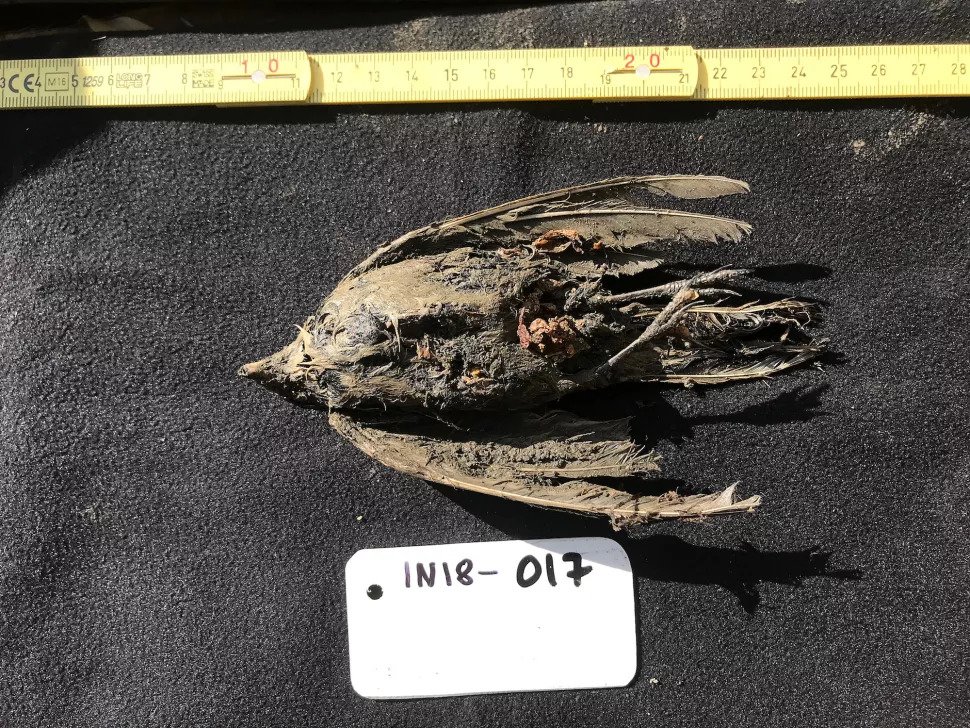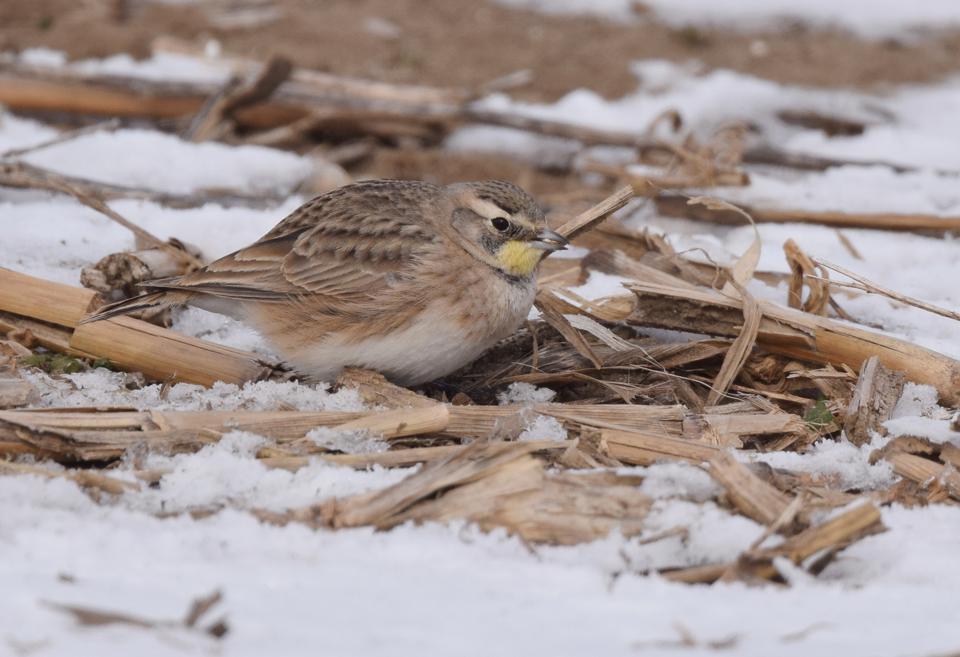Frozen Bird Found in Siberia is 46,000 years old
During the last Ice Age, a bird found in northeastern Siberia died and gives a crucial insight into the evolution and effects of climate change.
An international team of scientists has learned that at least 46,000 years ago, a bird discovered in the Siberian permafrost died.
The bird was found in northeastern Siberia, a mammoth steppe that extended across northern Canada, Europe and Asia during the last Ice Age when the bird was still alive.

DNA collected from this frozen bird could help shed light on how at the end of the last Ice Age, when the Earth was mostly covered in ice and snow, the mammoth steppe turned into tundra, taiga and steppe biomes and could further illuminate the evolution of subspecies.
In 2018, a well-preserved bird was discovered by local fossil ivory hunters 30 km east of the village of Belaya Gora, Yakutia, in northeastern Siberia (red dot, figure 2). The bird carcass was found approximately 150 meters (492 feet) into an ice tunnel that had been hydraulically mined into the permafrost at a depth of roughly 7 meters below the earth’s surface.
The frozen bird appeared to have died non-violently before being rapidly frozen, thus preserving its body for millennia. The ‘nearly intact’ body was so well preserved that it could be identified as a horned lark, Eremophila alpestris, appearing as if she had ‘died yesterday’. So it was somewhat surprising (and quite exciting) when radiocarbon dating revealed that the lark died sometime between 44,163–48,752 years BP — in the middle of the last Ice Age.
During the last ice age, mammoth steppe was the Earth’s most extensive ecosystem, covering much of the northern portion of the planet. It featured a cold, dry climate that favoured high-productivity grasses, herbs and willow shrubs, and was dominated by long-horned bison and horses — and was home to woolly mammoths, woolly rhinoceros and cave lions, all of which are now extinct. This ecosystem thrived for approximately 100,000 years before the thawing climate suddenly made it nearly extinct about 11,700 years ago.
This vast wide-open habitat is favored by horned larks, a species may have originated in northeastern Siberia during the middle Pleistocene (ref) before diverging into separate Eurasian and North American lineages. These small ground-nesting songbirds breed in the wide-open spaces of the high Arctic and above the tree line in mountains. Lacking any closely-related competitors, North American horned larks also breed in other, more temperate wide-open spaces, such as prairies, semi-arid regions and in deserts, which is where I first saw them.
To learn how this Pleistocene bird is related to modern horned larks, the researchers from the Centre for Palaeogenetics isolated ancient DNA from the specimen and analyzed it.
“The genetic analysis suggests that the bird belonged to a population that was a joint ancestor of two subspecies of horned lark living today, one in Siberia, and one in the steppe in Mongolia”, said lead author of the study, ornithologist Nicolas Dussex, a postdoctoral researcher at Stockholm University who specializes in conservation genomics and avian evolution.
“Our results support this theory since the diversification of the horned lark into these subspecies seems to have happened about at the same time as the mammoth steppe disappeared”, said co-author of the study, Love Dalén, a professor of evolutionary genetics at the Swedish Museum of Natural History and research leader at the Centre for Palaeogenetics.
As the planet warmed at the end of the last Ice Age, mammoth steppe nearly disappeared, giving way to several habitats that we are familiar with today: tundra in the north, boreal forest (taiga) in the middle and steppe in the south.
The researchers’ ultimate goal is to map the ancient lark’s genome and compare it to genomes of modern subspecies of horned larks to learn where this bird fits into the lark evolutionary tree and to better understand how subspecies arise.
Currently, there are at least 42 formally recognized subspecies of horned larks that cluster into one of six separate lineages. Additional studies may reveal that any or all of these lineages may qualify as distinct species clusters.
“This helps us understand how the diversity of subspecies evolves”, Dr Dussex said. In recognition of being the oldest bird yet unearthed from this time period, the researchers refer to her the ‘Icebird’.
Uncovering frozen mammals in Siberia is not new: people have uncovered a veritable zoo of frozen mammoths, woolly rhinoceroses, horses, bison and wolverines for many years, the researchers noted in their study (ref). But finding a frozen bird is something special because their bodies are small and fragile and thus, don’t typically preserve well.
Scientists at the Centre for Palaeogenetics are working with some of these other ancient animals, including an 18,000-year-old puppy named ‘Dogor’, which the research team are still working on to identify whether it’s a wolf or a dog. They also are working on a 50,000-year-old cave lion cub, ‘Spartak’, a 30,000-year-old severed wolf head, and a partially preserved woolly mammoth.

Analyzing the complete genomes of ‘Icebird’ and these other ancient specimens could provide a deeper understanding of the evolution of animals during the Pleistocene and of the impacts upon them from climate change.
“The new laboratory facilities and the intellectual environment at the Centre for Palaeogenetics will definitely be helpful in these analyses”, Professor Dalén pointed out.
The Centre for Palaeogenetics is a joint venture between Stockholm University and the Swedish Museum of Natural History. Its main objective is to bring together scientists from different disciplines, such as biology, archaeology and geology, into a cutting edge research environment dedicated to ancient DNA analyses.
